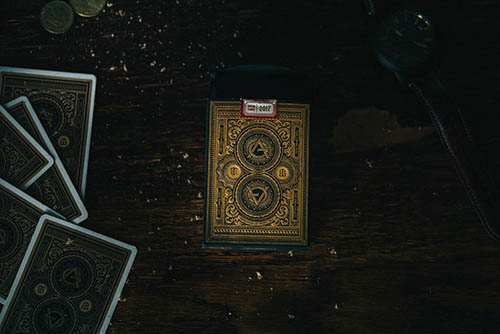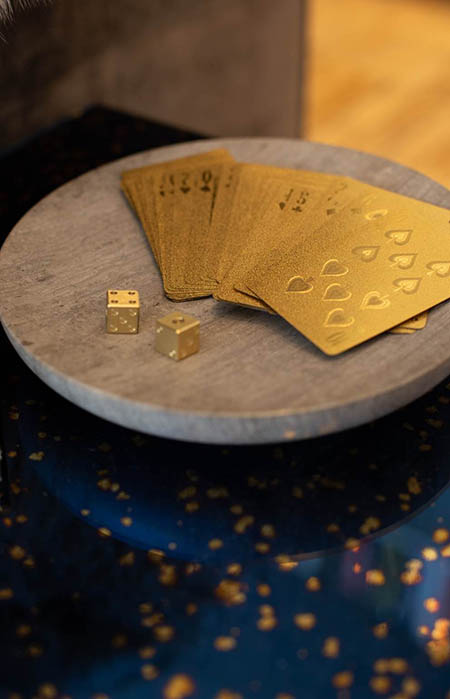
|
| « Articles | History of Playing Cards | Gallery of Playing Cards | Card Games Rules | CONTACT |
Fascinating Facts about Card Magicians

The card magician is a master of close-up deception, but how do they do it?
Some pull a rabbit out of a hat, others saw their assistant in half, but one sort of magician is slightly different to all others, the ones that play tricks with cards. Whilst card tricks are often the way that children start out learning magic, mastering complex card tricks is one of the most difficult parts of a magician's repertoire. If you want to find out about the most famous card magicians, which tricks were their most famous, which cards their favorite, then you've come to the right place.
Juan Tamariz and the Mnemonics Deck
Born in Madrid in 1942, Juan Tamariz is one of the foremost card magicians in the world. He earned his stripes in the world of illusion at a young age, being invited into the Spanish Society of Illusionism at just 18. At the age of 29, he won the World Prize for Magic using just a card trick. He relies enormously on his sleight of hand, as many card magicians do, but has an ease to his performance that has taken decades to master. For fans of magic, the next part will be obvious, but for those who have never delved deeply into the world of card tricks, it will be fascinating information.
Most apparently random card decks are in fact shuffled into what is known as a mnemonic stack. A mnemonic device is anything that is used to help form a memory, Juan Tamariz had his own way of ordering a 52 card deck in order that he would be able to remember the location of each card, despite their order appearing random. Over his career, he released numerous books about the importance of having a mnemonic deck and the theory behind his own. They say a magician never reveals his tricks, but as it turns out, a magician as good as Juan Tamariz can afford to.
The Preferred Brand?

Whilst Bicycle Classics are a good starting point, many magicians choose to go for something showier as they progress.
As any cards enthusiast will know, as there are horses for courses, there are different cards for different tasks. Kem playing cards are amongst the most sought after for poker tournaments, as they're entirely plastic and so can't be bent.
Anyway, in the world of magic, there are similar preferences. Almost all new players will begin with a standard deck of Bicycle Classics cards. The cards are a standard size, the size used for poker as opposed to bridge, which means that when a magician comes to choose a fancy or decorative pack of cards, they won't have to relearn any sleight of hand tricks with a different sized card. Unlike poker cards which need to be completely plastic in order to make them difficult to bend or mark, magic cards can actually benefit from being easy to mark. Cards made from, well, card, can have subtle marks made in them to ensure that a magician has definitely selected the right card for the trick. Even someone as well-practised in mnemonics as Juan Tamariz can use a little help from time to time.
The Theory of The Card Trick
If you've made it this far then you're probably interested in how a card trick works. We've already learned about mnemonics decks, marking cards, and sleight of hand, so how exactly does it all come together? The Triumph Card Trick is a very well-known trick, if you've ever seen a card magician show then you'll likely have seen a variation of it. It is incredibly simple but hugely impactful. A card is selected from a deck and then put back in wherever the selector chooses. The deck is split, half of it is turned upside down and then the cards are shuffled, leaving a random selection of cards facing upwards and downwards from which the magician spreads the cards on the table to show an entire deck facing the same way, with the participant's card the other way, right in the middle.
If you don't want the magic to be spoiled, then stop reading now! When the spectator chooses their card, they place it back in the deck, and whilst the magician makes a show of turning half of the deck around, he moves the card to the very bottom of the deck. The half of the deck that he turned around has actually not been turned at all, just the top card on that half, however, to the audience it looks as though the whole half has. The deck is then shuffled, being careful not to move the bottom card until the very end, when it is turned the opposite way to the rest of the deck, inserted into the middle, and then splayed to show to the audience.
|
|
|
|